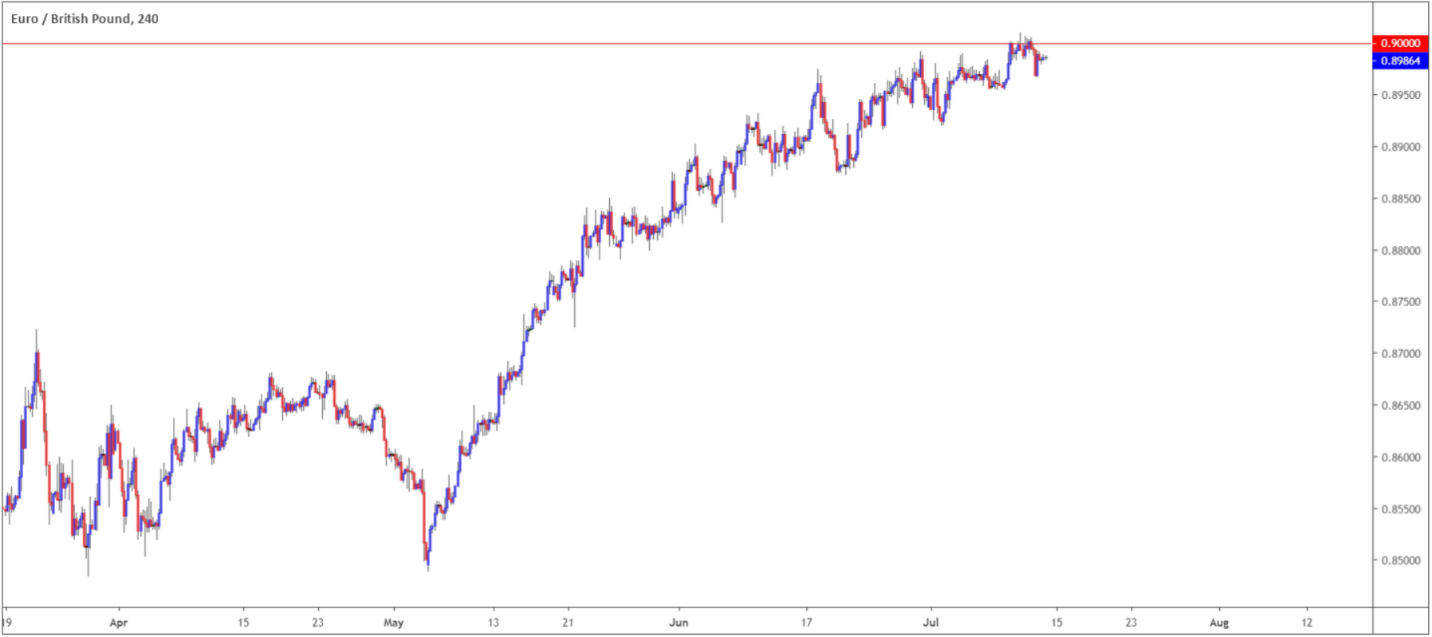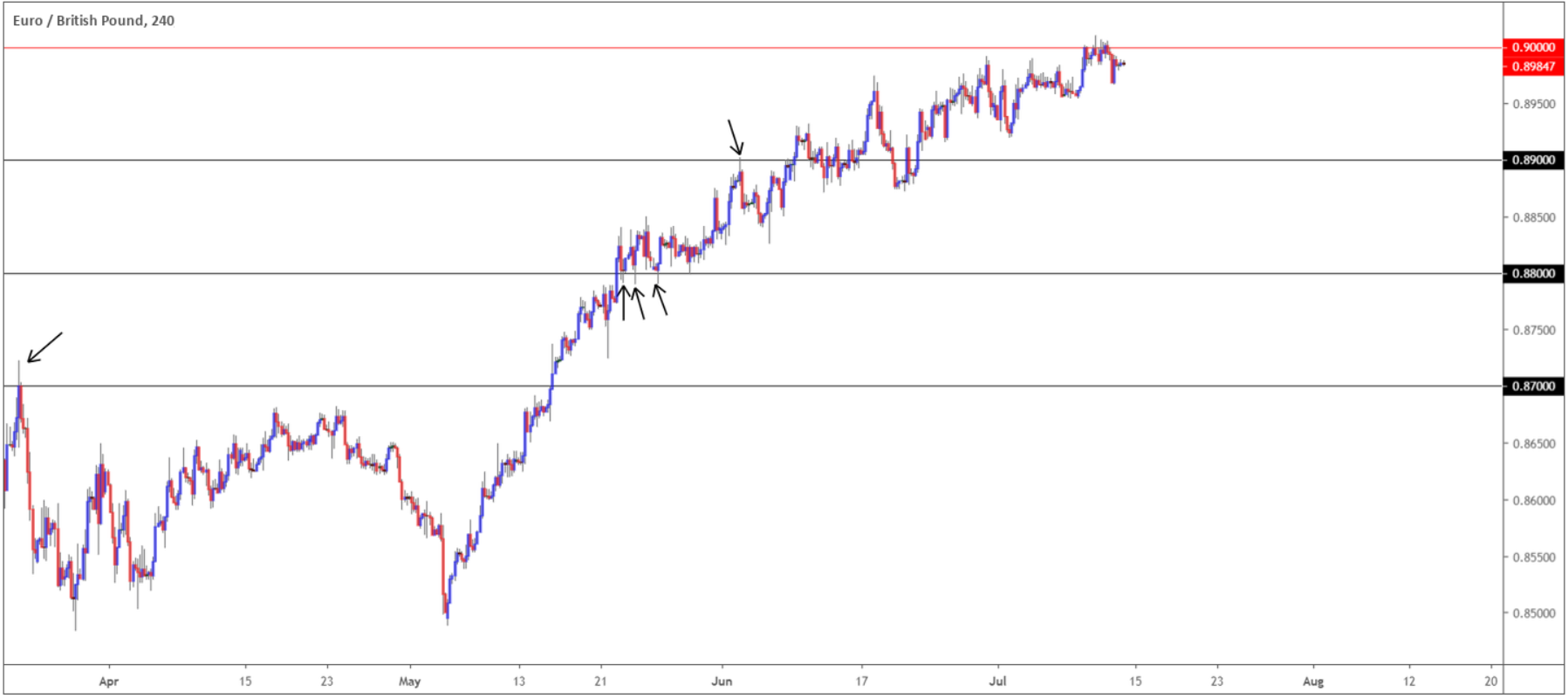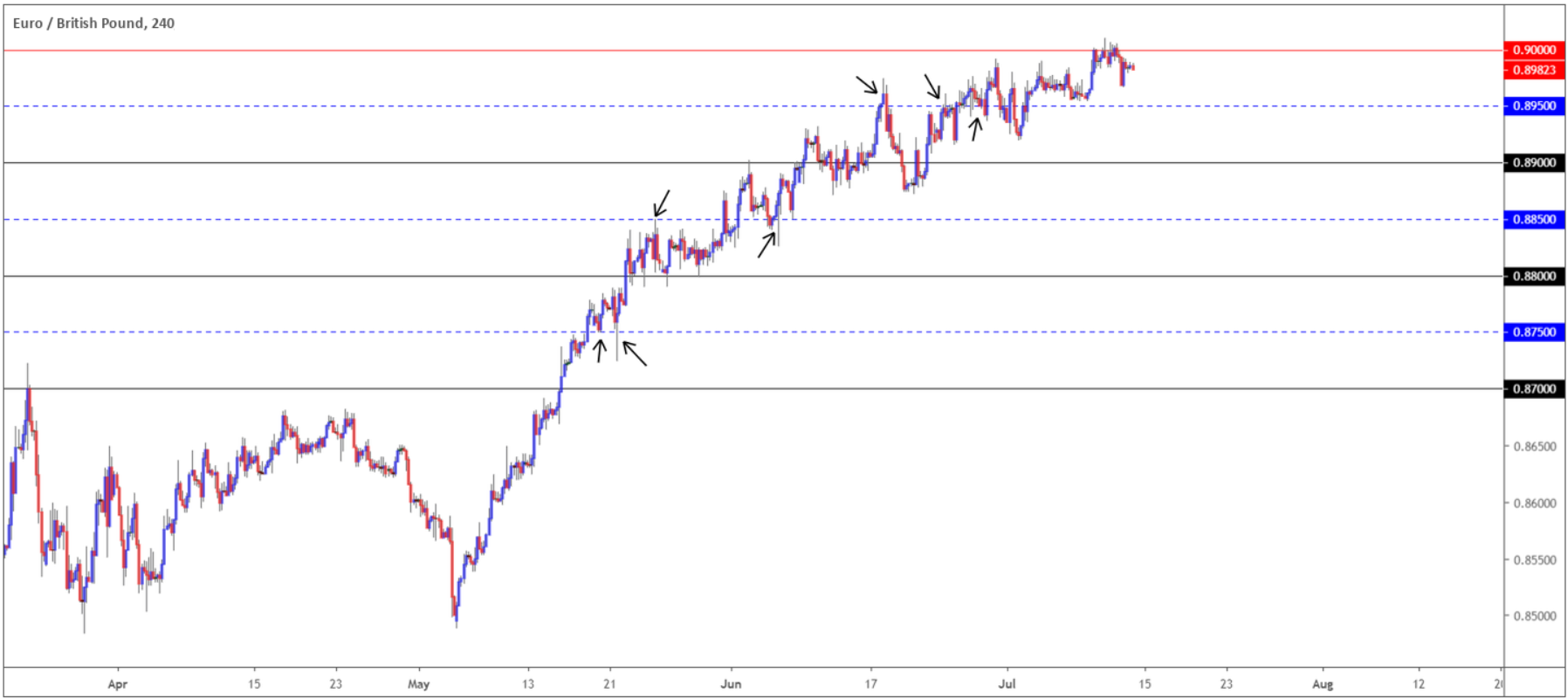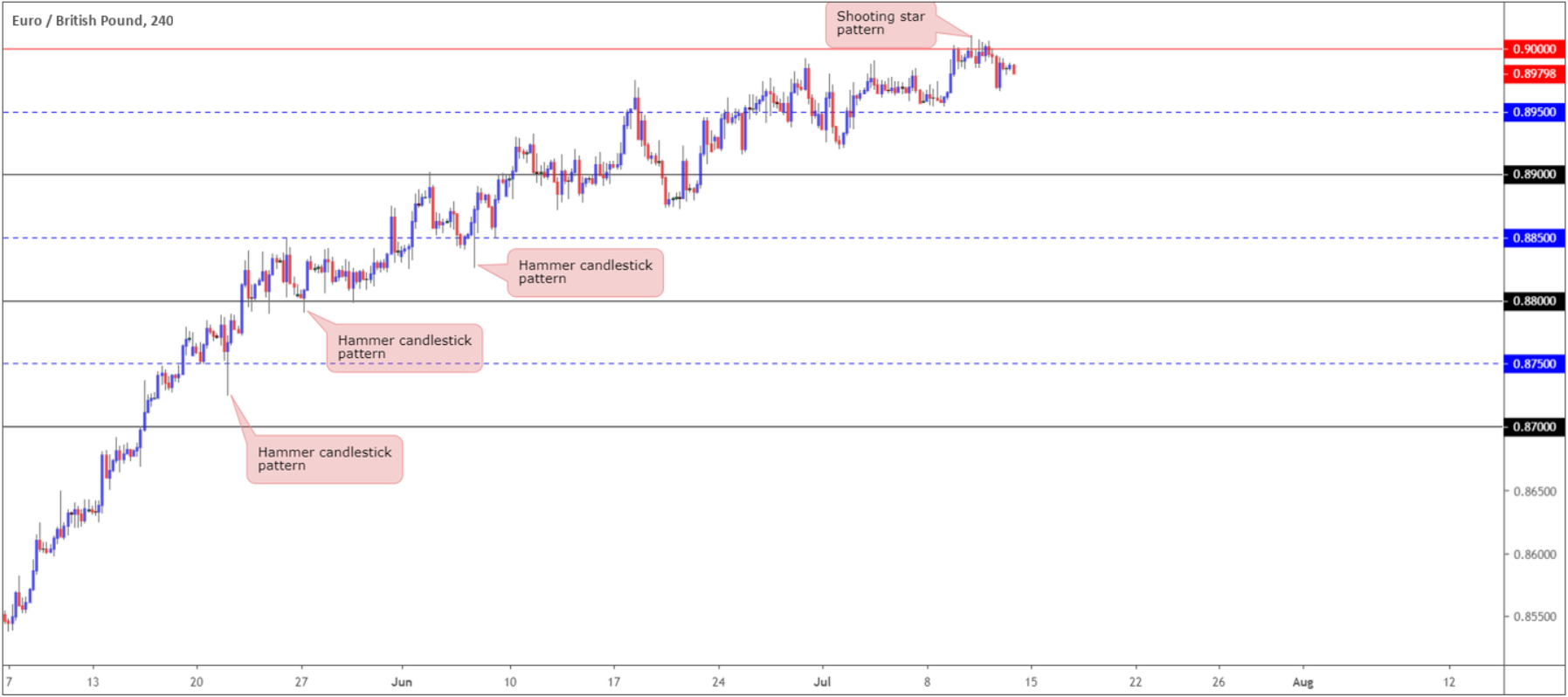Numbers have mattered to humans since the earliest civilization, though some propose more significance than others.
Humans appreciate values that are easy to process and make sense of. Rounding numbers is, therefore, a common act. Rounding means making a number simpler but retaining its value close to its original. Age is generally emphasised as a round number in conversation. We talk about being in our 20s or in our 30s, rather than in our 25s or our 32s. Another example is time. How many of us unwittingly tell the time using round numbers?
Why should it be any different for the financial markets, specifically the foreign exchange or forex market?
Support and resistance, within the field of technical analysis, is commonly the first area of price action newer traders attempt to tackle. It is also one of the most difficult to grasp, on a proficient level that is. Therefore, psychological levels, or sometimes referred to as round numbers, appeal. The values are embedded in market structure for everyone to see, permitting objective analysis.
Identifying psychological levels
Usually the more zeroes at the end of price, the stronger the psychological level. For that reason, areas of support and resistance tend to form at these levels. Psychological levels, particularly larger figures, are regularly cited in financial media, especially after a benchmark index crosses a key level (round number).
Full levels:
Aside from parity – where 1 unit of a base currency equals 1 unit of the quote, or counter, currency – .000 values, or full levels, are the largest round numbers in the foreign exchange market for most currency pairs.
A prime example of a full level in action is on the EUR/GBP H1 chart (see figure 1.1). Although trading within a healthy uptrend since the beginning of May, 0.9000 currently offers resistance.

(Figure 1.1)
Double-zero levels:
Although generally packing a lighter punch than full levels, double zeros, or sometimes referred to as whole numbers, are regularly voiced among the technical community as viable support and resistance levels. As evident from figure 1.2, the EUR/GBP used double zeros 0.8800 to propel price action higher and 0.8900 as a means of profit taking. Once 0.8900 was taken out mid-June, the pair retested 0.8900 as support, though dipped beneath the barrier more than 20 points before exploring higher ground.

(Figure 1.2)
Mid-level numbers:
Mid-level numbers – levels ending in .50 – are regularly aired amongst technicians. Their use is similar to whole and full levels: support and resistance. As shown in figure 1.3, mid-level numbers 0.8750, 0.8850 and 0.8950 provided support throughout the recent EUR/GBP uptrend and acted as points of resistance, offering traders a location to cash in on profits and adjust positions.

(Figure 1.3)
Trading psychological levels
Several techniques incorporate psychological levels, with the most obvious leaning towards either fading or attempting to trade a breakout.
Using the same EUR/GBP charts, candlestick traders use psychological levels as their base – their level of interest, if you will. Once price action connects with a psychological level, traders confirm by way of Japanese candlestick signals.
Using hammer candlestick patterns (a bullish signal) and shooting star patterns (a bearish signal), figure 1.4 demonstrates its effectiveness. Three long opportunities within the current uptrend were seen, and, more recently, the chance to sell came about off the full level 0.9000.
Japanese candlesticks help identify buyer/seller intent and provide traders with entry and risk levels to work with. Entry and risk parameters vary depending on the candlestick formation. Traditionally, for a hammer candlestick pattern, entry forms once price action breaks above the high (entry using a buy stop is common), with a protective stop-loss order positioned beneath the lower shadow. It’s the same for a shooting star candlestick configuration only in reverse order.

(Figure 1.4)
Combining candlestick analysis with psychological levels is just one of the many trading methodologies available.
Indicator-based traders opt to combine divergence and overbought/oversold signals with psychological levels. Others prefer to align other forms of price action analysis to confirm a round number. For example, does a supply or demand area merge? What about trend line analysis, harmonic analysis, Fibonacci analysis or moving average studies? The number of ways traders can use and confirm psychological levels is almost limitless.
Limitations of psychological levels
To knowledge, no currency pair respects round numbers any more than others. What is clear, though, price action frequently whipsaws through these levels. This is the primary limitation.
Psychological levels, given their visibility, are a magnet for orders. Examine any order book on any foreign exchange broker and you’ll see a collection of orders often congregate around these barriers. If retail traders are aware of this, so are other players in the market.
A well-known theory is the practice of running orders around psychological levels. Not only does this trip protective stop loss orders from traders attempting to fade, it also triggers breakout orders as well. Logically, it makes sense. Traders moving large amounts of money require liquidity: orders to buy or sell to. Without this it is impossible to trade. Therefore, running through a key psychological level (support in this case) will trigger sell stops from traders fading the barrier and sell stops from traders attempting to trade the breakout. This provides sell orders to buy into.
This is primarily the reason behind requiring additional confirmation before committing funds to a round-number trade. There’s nothing worse than having your protective stop-loss order tripped, only to see price action hit the take-profit target.
Including psychological levels in your trading
While psychological levels will not be to everyone’s trading taste, understanding where they’re positioned on a chart and the meaning to other traders is essential. Knowing these numbers garner attention should, at the very least, warn of potential support and resistance should a trade come to fruition that’s nearby a round number.
Traders who wish to include psychological levels in their trading strategy are urged to spend some time looking at the charts, testing different methodologies and finding what best suits you. You won’t regret it.




